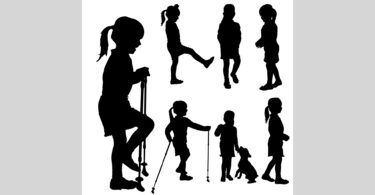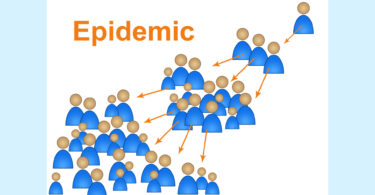To better understand the Romantic system of healthcare that emerged, built on the general foundation of the Brunonian system, but drawing from the Special Theory of Hahnemann and Heilkunst (applied to disease), we need to quickly consider the four main philosophical streams regarding the issue of life at that time. There were the Hunterian physicians, who saw the vital principle as residing in one of the humours, the blood, and providing a link between the animate and inanimate, which could be explored and delineated experientially. While Coleridge supported the aims of John Hunter and ‘the Hunterians’, he criticized its false polarity between spirit and matter, arguing later in his own explanation of the ‘Dynamic System’ that it was between Spirt and Dynamis, with matter being the resultant.
The second group (Haller, Cullen) transferred the functions associated with the humours to the nervous system, and put forth two principles, ‘irritability’ and ‘sensibility’, which could be empirically investigated, unlike the workings of the living power in blood. This ‘great achievement’ of integrating therapeutic principles and practice made it the “most common philosophy” in the period 1750s to 1780s. A third group, which included Thomas Beddoes, rejected any vital principle at all as unverifiable, as well as Cullen’s attempt to subordinate all of medicine to neuropathology, but had no alternate concept to provide a “common systematic principle underlying the processes of life.”
It is in this context that both Beddoes in England and Andreas Röschlaub in Germany, but for different reasons, were drawn to Brown’s ‘excitation theory’, Beddoes for the presumed mechanism (imbalance of excitants) to explain both disease and the attendant therapeutic measures, Röschlaub for the unifying idea that also linked pathology to physiology, and provided a rational explanation for life itself that was neither a presumption (vitalism) nor an abstraction (materialism).
In Brown’s system, all disorders and diseases are systemic and not local, removing the confusing proliferation of disease names based on semiotics and symptomatics; pathology is an unnatural divergence from physiological function, with an inverse proportional relationship between pathology and therapeutics; and both physiology, pathology and therapeutics are governed by scientific laws (the biologic of vital nature) as rigorous as Newton’s for inert nature. While Kant and Kantians saw in Brown’s system something that could be reduced to mathematical precision and quantification, Röschlaub and others saw in Brown a system far from mechanical, but rather dynamic and in keeping with the insights of Naturphilosophie.
Through Röschlaub’s writings, mainly between 1796 and 1806, Brown’s conception of life was brought out: as a potential in us that is brought into action and reality as a result of the workings of the actual (excitants or stimulants) on us, and of the living principle as a receptive potentiality (‘excitability’, or the capacity to be impinged upon) and pro-active (‘excitement’, or the capacity to respond to impingements), that is, as a dynamic power. For Röschlaub, there was a functional dynamic between excitant and excitability, that produced health (biogenesis), but also ill-health (necrogenesis).
The Furor
The Brunonian movement caused a commotion in Germany. One could scarcely open a general-interest medical periodical in the decade after 1795 without finding a reference to John Brown’s ideas. The debate over the merits of the system convulsed the medical community. It received extensive coverage in the general literary reviews, feeding the interest of the broader educated public and touching even Weimar, where Goethe felt himself called to peruse Brown’s book.
Röschlaub, a well-known physician and professor at the university in Bamberg, southern Germany, had been introduced to Brown’s Elementa Medicinae as a medical student in 1793, and after graduation made his own translation (delaying publication until 1806-7). Röschlaub worked out Brown’s system with his colleague in the clinic, Dr. Marcus. Their approach emphasized and drew on the dynamic understanding of Brown’s theory, and their application turned Bamberg into a “famous, intellectual and medical centre to which students came from as far as America.” Even Hufeland, the leader of the traditionalists, eventually came to visit and must have been impressed as he later tried to show that the excitation theory was compatible with the traditional stream. Röschlaub grasped, where no one else had been able, even Schelling, with his Naturphilosophie, that Brown had provided the very elements of an approach to health and sickness that was dynamic in nature and by means of a concept – ‘excitation’ – that was the practical application of a Lockean and Fichtean approach to the subject/object or observer/observed problem, to the problem of the relationship between qualitative and quantitative, and also to the very problem of life itself.
With the influence of the Brunonian system, and the widespread misunderstanding of it as mechanical and its therapeutics as quantitative, along with a profound lack of understanding of physiology, most practitioners misapplied it and reduced it to a caricature, which then influenced the way it has since been regarded historically.
The ‘Elements’ of a New System
Brown’s use in the original Latin of ‘incitability’ (rather than the more restricted term used in the English – ‘excitability) contained the germ of a distinction between the sustentive (Lebenskraft) and generative (Bildungstrieb) powers, as Coleridge astutely noted: “Brown has not proved that the Incitability itself cannot be altered – not merely thro’ incitement – but unmittlebar [unmediated]– says the Jena recensent, Feb. 1799, No. 48 (Notebooks 1:38). He might have been thinking of Brown’s discussion of contagious diseases wherein we see this interplay between the general action (‘affection’) of the sustentive power (excitability/excitement) and the more specific and different action of ‘contagions’ (e.g., LXXVI: “Contagious diseases are] not an exception… because …no general affection follows the application of contagion, if no undue excess or defect of excitement is the consequence…”), or his reference to a pro-creative as well as sustaining power as in CCCXXVI (“every living system lives in that which it procreates…that the system of nature remains and maintains an eternal vigour”).
When added to his distinction between beneficial (‘agreeable’) and harmful (malignities) ‘excitants’, Brown provided the basis for understanding how the level of excitability/incitability (potential) can be shifted upwards (potentiated). Finally, Brown introduced the powerful idea that pathology (unhealthy function) was simply physiology (healthy function) extended beyond a certain range of sustainable variability or rhythmic pulsation (a function of the polaric functions that constitute life).
Brown’s excitation theory succeeded, where the traditional, neuropathical and vitalistic approaches had failed, in linking physiology, pathology, nosology and therapeutics. Röschlaub applied Brown’s wholistic, integrated system early on in his medical career, to fevers.
Röschlaub’s Further Contributions
Röschlaub worked initially with Fichtean insights and then with Schelling and his Naturphilosophie, establishing a dynamic basis in natural science for healthcare. However, he realized that healthcare could not be restricted to natural science, even a dynamic science grounded in physiology (the germ of which was provided by Dr. Richard Saumarez in England in 1798, A New System of Physiology). In this regard, Röschlaub made a distinction between
Wissenschaftslehre (natural science) and Heilkunde (the practical, clinical side of therapeutics), in which latter work he established the first teaching clinic, in concert with Dr. Markus, in Bamberg, Germany.
Röschlaub then made a further distinction between Heilkunde and Heilkunst. The second took him into the very dimension of life itself, the etheric realm beyond the physical, a dimension that required an entirely different organ of knowledge from the intellect or Sinn (mens) that was the foundation of both Wissenschaftslehre and Heilkunde. Unbeknowst to him, one of his countrymen had been working on the development and understanding of this new cognitive capacity, called the Gemüt. As a result Goethe was able to ‘see’ (anschauende Erkenntnis) into the dynamic realm of nature and grasp the very movement behind the forms, and the very functions that determined a given form, including the archetype (Kraftwesen) out of which all forms of a given Idea (such as ‘plant’ or ‘animal’) devolved. Although Goethe termed this study Metamorphosenlehre, it was, more accurately stated, a pleomorphic process. The activation and cultivation of this new cognitive capacity enables the physician or Leibarts to go beyond the symptomatics and outer semiotics as a basis for diagnosis, with its many pitfalls and shortcomings, and also avoid the abstractions and suppositions of the material scientific approach. It was the task of the physician to draw out (‘educe’), and allow ‘to come forth’ (Heidegger’s Veranlassung and Hervorbringung), the natural state of health of the individual so as to enable him to undertake his individualized higher purpose in life.
Heilkunst was not simply another projective art form such as painting, music, sculpture or even Goethe’s Dichtkunst (literature), but an educative art, in which the artist, the Heilkünstler (Hahnemann), seeks to bring forth out of the tangle of illness and disease at all levels, the true self, the fully liberated (at liberty to follow his higher purpose or aspiration) and conscious (a super-conscious mind higher than ordinary or waking consciousness) man or mensch.
Röschlaub also realized that Brown had only provided the basic ‘elements’ of a method for the science of life, and that what was still needed was the overarching or archetypal function from which all other functions were derivable and given meaning and direction, and which would also then provide the very goal and purpose of medicine and health, the ‘positive’ as well as the ‘negative’ (removal of suffering) sides of healthcare. However, this overarching, archetypal function would have to wait until the 20th Century for its discovery and elucidation by Dr. Wilhelm Reich (super-imposition or Überlagerung) and Rudolf Steiner’s Metamorphosis, the exponents of the underlying Kraftwesen.






